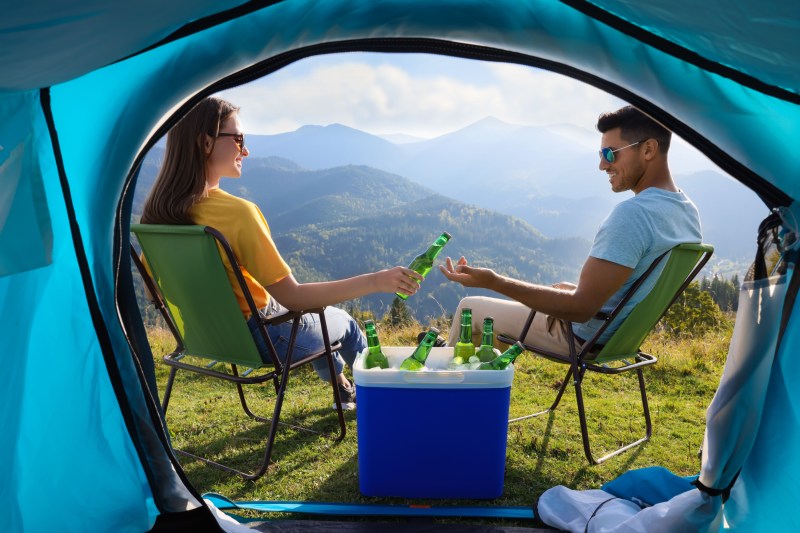
Is there anything more special than heading to your local campsite and pitching for a few nights? Summer camping season may mean long hot nights around the campfire and exploring local trails, but camping in hot weather can also be uncomfortable or even unbearable. If you’ve ever woken up in a tent under the baking sun, you’ll know just how brutal camping in the summer can be.
Camping in hot weather can take as much planning and preparation as midwinter camping. While camping in cold weather is usually a case of adding more layers to warm up, cooling down can be more difficult — especially if you like to be active when you’re camping. Whether you’re backpacking, RV-ing, or setting up for a relaxing weekend, these hot-weather camping tips will keep your summer camping cool and comfortable.
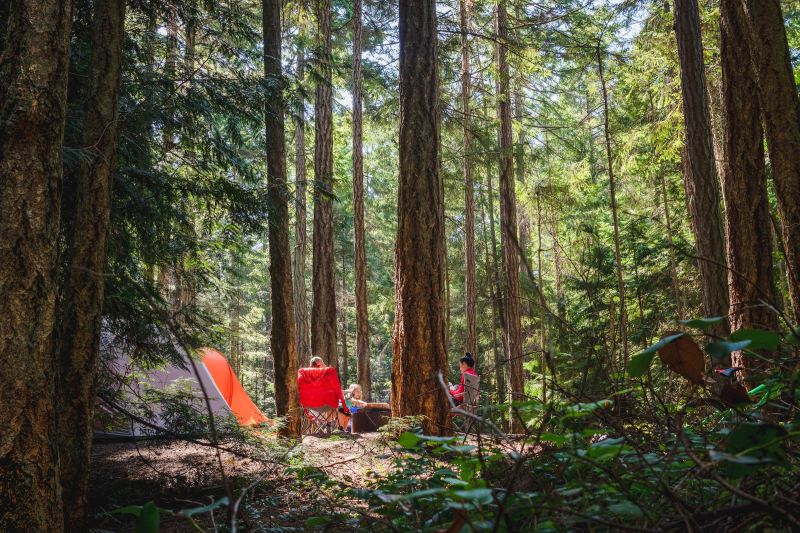
Look for shade and water for your pitch
The best way to ensure a comfortable camp is to pitch your tent in the right place to start with. While pitching under a tree when camping in the rain isn’t recommended, shade and shelter can make all the difference in summer camping. If no natural shade is available, you can always create your own. Pitch your tarp over your tent or as a standalone to create a shaded outside area. In sparse woodland, this is easy, but in open areas, you may have to get creative with hiking poles, branches, or your vehicle rooftop.
Given a choice, always head for a camp spot with a little elevation. Elevated pitches usually get a little breeze, which keeps bugs away and cools you. If you can, pitch near some water for swimming, cooling off, and collecting drinking water. However, insects often accumulate near water, so this can be a double-edged sword.
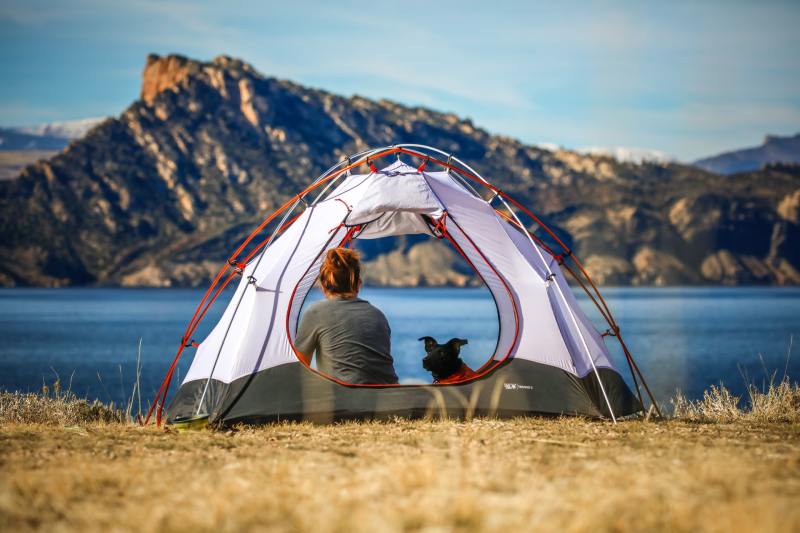
Remove your tent fly during the day
There are multiple benefits to removing the rainfly from your tent during the day. With just the bug net, you can hang out in your tent for a little shade during the day but still enjoy a cooling airflow — bonus points here that you won’t get bitten by insects. Some campers in hot conditions even choose to keep the rainfly off overnight.
Removing your rainfly will also give your tent a chance to dry out. In hot weather and humidity, breath and sweat will condense on the inside of your rainfly, and this is your chance to dry your tent out and allow it to cool down so you’re not stepping back into a sauna after your hike. If you aren’t keen to remove your rainfly, you can always reflect as much heat as possible using a foil blanket or foil-backed tarp pitched over your tent fly.
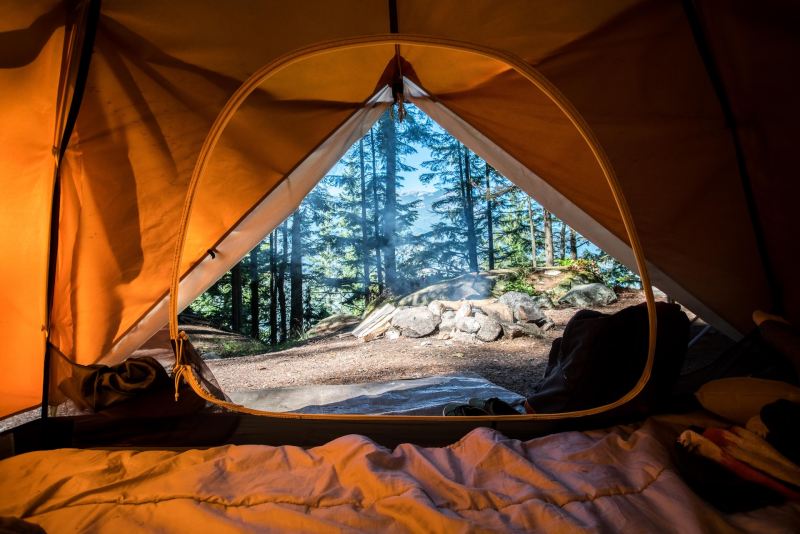
Ditch the sleeping bag — use a liner
Sleeping bag liners are generally overlooked, but never more than during the summer. While liners will add a layer of insulation to your sleeping bag in winter, they can replace them completely for summer camping. Sleeping with nothing covering you can leave you feeling exposed, and sleeping in a silk or cotton liner can resolve this. On cooler summer nights, you can use your winter fleece liner.
It’s worth keeping a lightweight sleeping bag on hand — unzipped — to use as a blanket if temperatures drop overnight to avoid that early morning chill. The bonus with liners is that you can wash them out during the day and dry them in the sun; this is especially beneficial for sweaty thru-hikers.
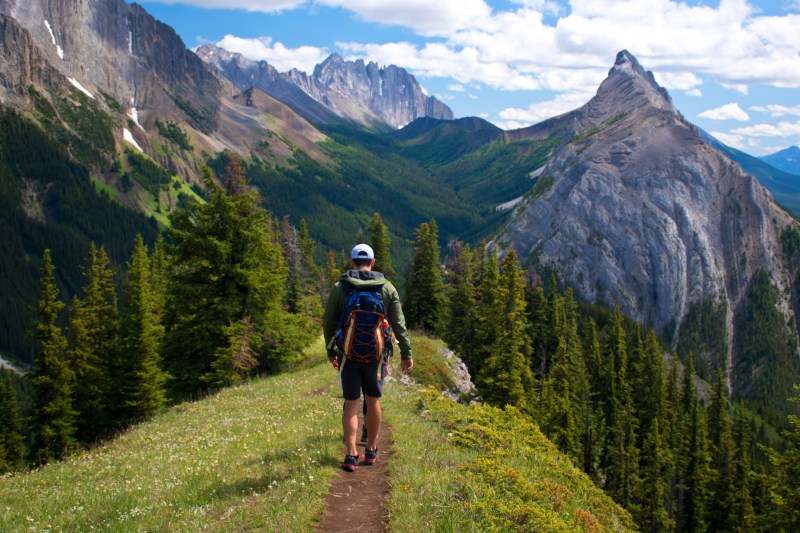
Wear UV protective, loose layers
There’s a lot of contention around wearing tight or loose clothing for summer hiking and activity, but when it comes to camping, you don’t want to be sitting in tight baselayers in the summer. Looser layers promote airflow around your body, removing sweat and cooling your skin temperature. Wearing UV-protective clothing and hats will protect you from the sun and allow you to stay in the sun longer. Pack a protective swim shirt for hitting the lake, too.
Loose layers are also beneficial around bugs, which struggle to reach you as easily. Consider buying bugproof clothing for bug-heavy campsites, and don’t forget to pack insect repellent. You should keep warm layers on hand for evening temperature drops, too.
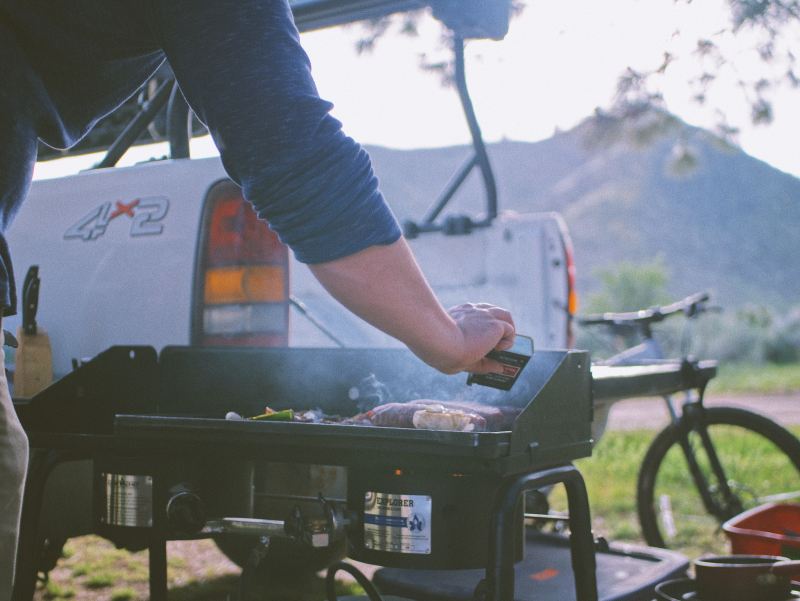
Get creative with your cooler
It’s no secret that staying hydrated is essential in hot weather. Let’s be real; unless you’re a minimalist thru-hiker, you want to extend your hydration options beyond plain-old water. Pack your cooler with your favorite fruity drinks and even ice for cold brews, and consider taking your backpack cooler for when you want to take your cold ones away from basecamp. If you’re going to drink caffeinated and alcoholic drinks, remember to top up your water levels as well, or you still risk dehydration.
Coolers give you the space to get creative with your food, too. Think about all your favorite summer foods; I’ll bet none are rehydrated camp meals. I’m not knocking these — they have a place — but you want salads, fruits, and meats to throw on the grill when camping, right? With the right cooler space, you can prepare your food and even marinade your meat before leaving home, elevating your camp cooking game to a whole new level.



